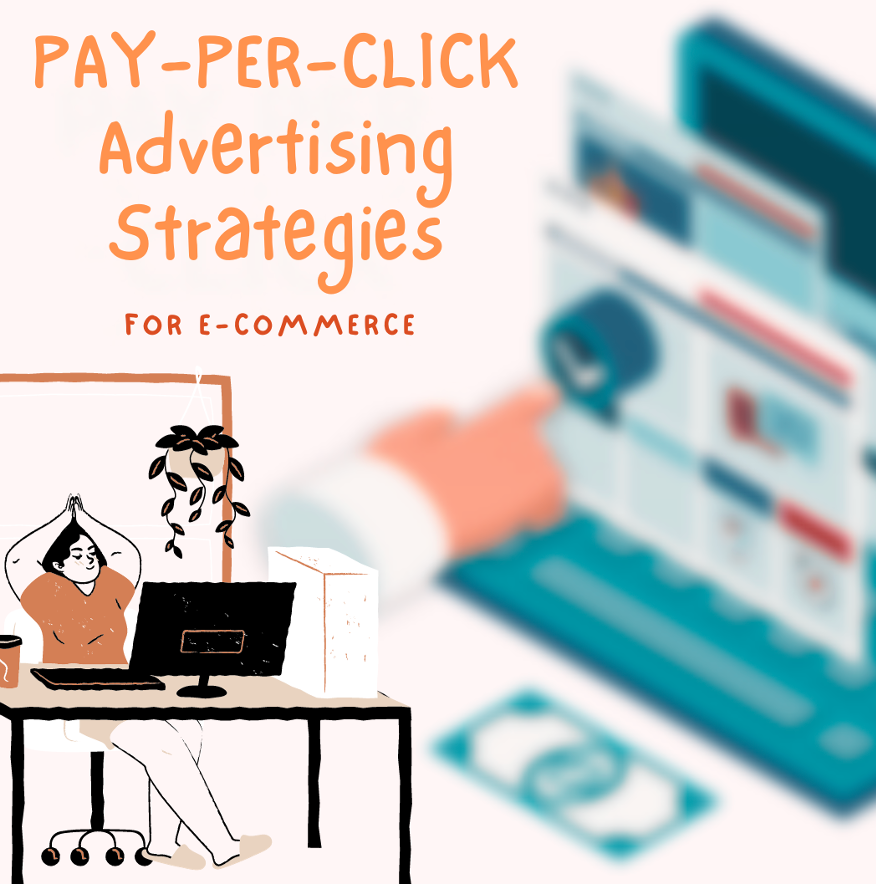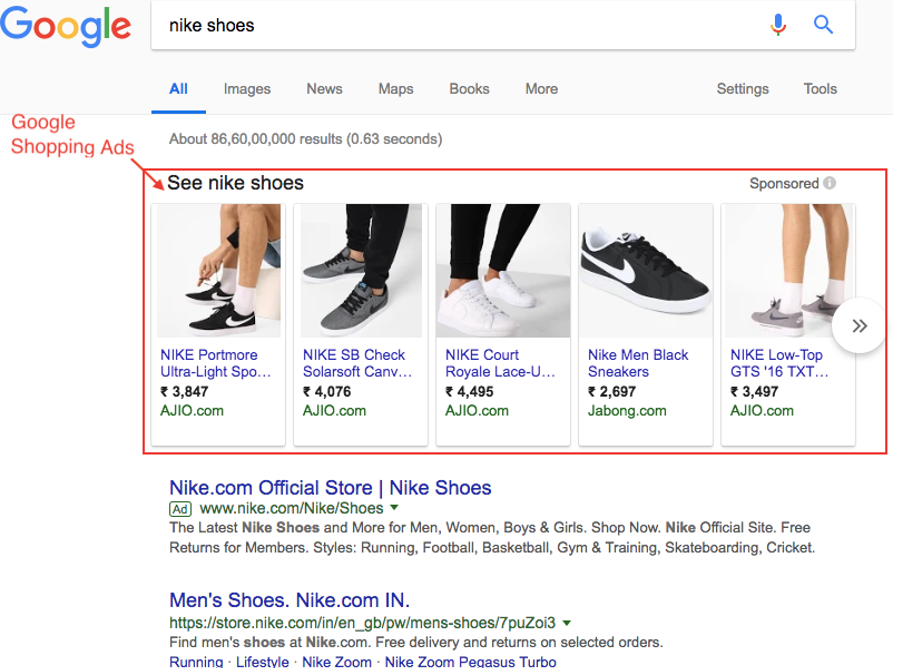You’ve probably seen those little ad pop-ups that come up anytime you’re viewing Google results pages. These can be in the form of text marked “ads”, or even shopping image ads at the top of the results pages or social pages. These are Pay-Per-Click (PPC) ads, and in the world of e-commerce, PPC advertising is a powerful tool.
In this article, we’ll explore vital aspects of PPC for e-commerce. This will give you the knowledge to leverage PPC as an effective strategy to boost sales of your e-commerce store.

What Are PPC Ads and PPC Management?
In PPC advertising, advertisers pay a fee each time their ad is clicked. This is a way to buy visits to your site rather than attempting to earn those visits organically. However, it is estimated that Google PPC ads especially have nearly a 200% ROI, making PPC one of the best forms of advertising across the board.
ECommerce PPC management, on the other hand, refers to the overall e-commerce and ad spend strategy.
In PPC, advertisers pay a fee each time their ad is clicked. This is a way to generate clicks to your website rather than attempting to get those visits organically. However, it is estimated that Google ads have a very strong return for a lot of eCommerce companies. If you sell on Amazon, you can also use Amazon PPC tools to help you streamline day-to-day tasks and enhance your ROI.
The Advantages of Ecommerce PPC
With its huge ROI, let’s see if PPC offers any other advantages:
Precision Targeting: Let’s say you run a paper writing business and have a PPC campaign titled “write my essays for me”. You’ll be able to reach a very specific audience with those keywords commerce, namely high school or college students, with surgical precision.
Data-Rich Tracking: PPC can provide rich data insights. Tracking your ads is a straightforward process, and you can collect a host of info within a relatively short time.
A/B Testing: You can experiment with PPC campaigns. It’s easy to test different elements of your ads, such as keywords, headlines, and descriptions, to uncover what works best with your audience.
Ad Extensions: With ad extensions, you can format your PPC ad to make it more appealing and informative.
Cost-Effective: With PPC, you only pay when someone clicks on your ad; this makes it a cost-effective way to reach your target audience.
Whether you are an e-commerce website, a brand, or a retailer, the following e-commerce PPC management strategies are tried-and-true methods to maximize your ad budget and improve your conversion rates.
How to Go About PPC Advertising
Generally, the process of setting up a PPC ad might look something like this:
- Choosing your campaign type on Google Ads. This depends on your objectives.
- Tweak settings and targeting such as audiences, devices, locations, etc.
- Provide your budget and bid strategy.
- Provide the destination URL of your E-commerce landing page
From here, you can then build your ad in greater detail.
Key E-Commerce PPC Strategies
Now that we’ve gained a solid understanding of what PPC management is, let’s explore key strategies to make PPC work for your e-commerce store or venture.
1- Tap Into Targeted Dynamic Ads
Dynamic search ads are excellent for e-commerce websites with a diverse array of product pages, blogs, and landing pages. Google’s ability to crawl your website and automatically match the content to your PPC ads ensures high relevance. Moreover, you can fine-tune dynamic ads based on various parameters like custom labels, page types, and target URLs.
2- Focus on Product Page Optimization
Your e-commerce landing pages effectively receive all the traffic that is generated by your PPC ads. Therefore, as part of your e-commerce PPC strategy, you should optimize these product landing pages for PPC.
Here are some ideas to optimize the product landing page(s):
- Use compelling headlines, prominent call-to-actions, and an appealing design.
- Ensure mobile-friendliness and easy navigation and crawlability.
- Don’t allow intrusive pop-ups.
- Incorporate social proof.
- Use relevant keywords in your ad copy.
- Ensure fast loading times, easy navigation, and a clear call to action on e-commerce landing pages.
For e-commerce websites, you can also organize products into specific ad groups, especially when running dynamically targeted ads.

Both Google and Bing offer shopping ads, with a notable preference among users for clicking on shopping ads rather than regular search ads. The image above shows an example of Google Shopping ads.
Shopping ads are particularly useful for e-commerce websites that need to move large product volumes quickly. Also, if your products have a limited shelf-life, you can leverage inventory aging reports to identify at-risk products and list them on Google or Bing shopping ads.
Also, take advantage of geographic and location targeting as these will improve CTRs for your ads.
4- Choose Keywords That Align
Back to keywords. The right keywords just make it easier for your ad to be discovered. Start by defining your campaign’s objectives – are you aiming to attract leads, boost sales, or increase website traffic? Most PPC campaigns prioritize generating leads and sales for the highest ROI.
Here’s some strategy for keyword optimization:
Avoid broad, highly competitive keywords if you have a limited ad budget. Instead, opt for specific long-tail keywords that align with user search intent and your website.
Perform keyword competitor analysis to identify effective keywords for your niche and refine your keyword list.
You could also include negative keywords in your campaign to eliminate non-performing keywords that could drain your ad budget.
5- Improve Click-Through Rates of Your Ads
The Click-Through Rate (CTR) measures the number of clicks relative to the total number of impressions. A high CTR is crucial for the success of your PPC campaign. Here are some tactics to improve CTR in your campaign.
- Utilize ad extensions to provide additional information, such as site links, product reviews, services, features, and structured snippets.
- Incorporate high-quality images in your ads.
- Use relevant keywords in your headlines, product descriptions, and captions. For example, if you’re advertising a paper writing service to college students, you can incorporate a keyword such as “pay for essay” to make the ad specifically targeted.
Continually work on improving the Google Quality Score of your ad keywords by testing variations and analyzing their performance. A higher Quality Score results in lower advertising costs and better ad placements.
6- Use Ad Extensions to Boost Visibility
Make your PPC ads more eye-catching by using ad extensions. These additional snippets of information (e.g., sitelinks, callouts, and structured snippets) incentivize potential customers to click on your ad and thus improve CTR.
7- Monitor and Optimize Regularly
PPC is not a “set it and forget it” strategy. It requires constant monitoring and optimization. Regularly review your campaign’s performance, adjust your keywords, and refine your ad copy. This ongoing effort is essential to stay competitive and maximize your ROI.
8- Mobile Optimization
Mobile e-commerce sales make up about 60% of total e-commerce sales, therefore it’s crucial to ensure that your PPC campaigns are mobile-friendly. Mobile optimization includes responsive ad design, mobile-specific ad extensions, and fast-loading mobile landing pages.
Wrapping Up
Getting results from e-commerce PPC marketing is a combination of strategy, understanding your audience thoroughly, and leveraging the tools that Google provides. Use each of the ten growth hacks to ensure your e-commerce PPC strategy truly works.
With its high return on capital invested, PPC ads are definitely worth it as you look to scale your e-commerce business and take it to the next level.

